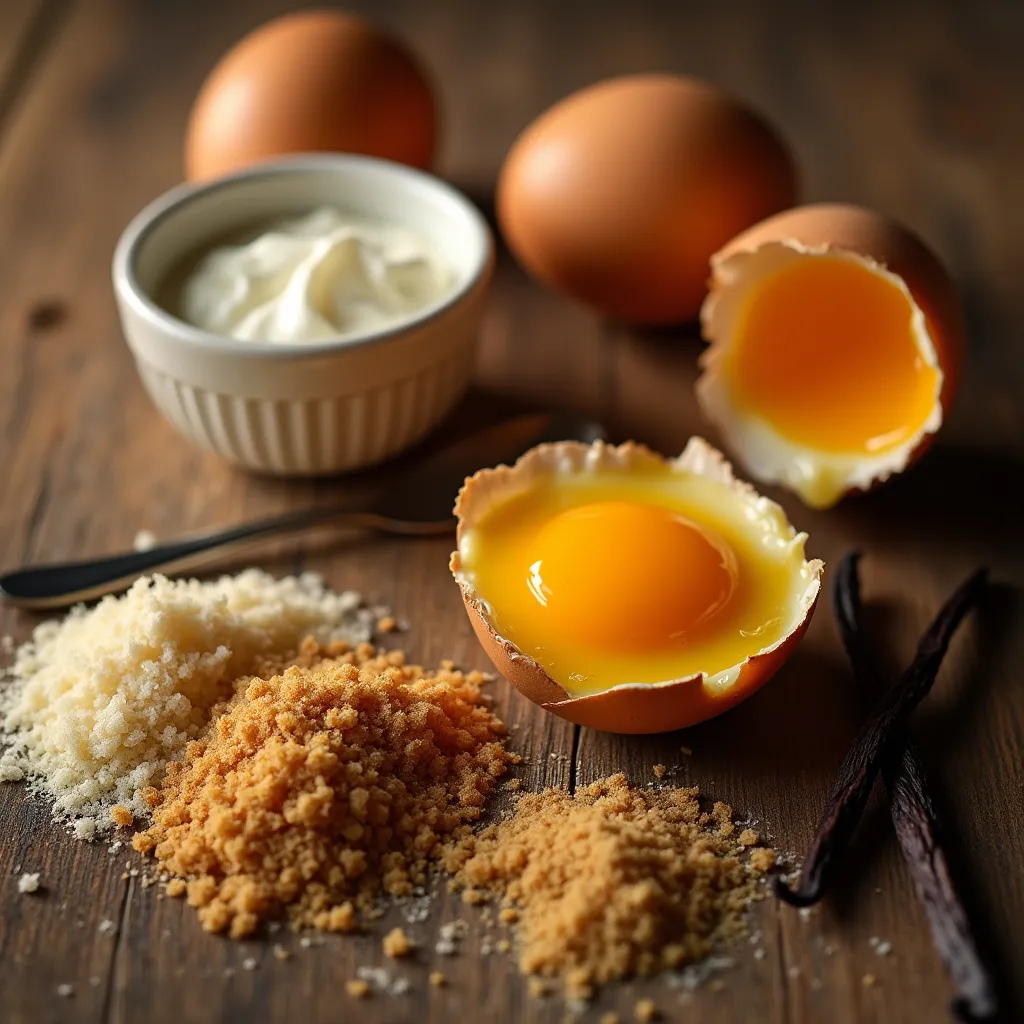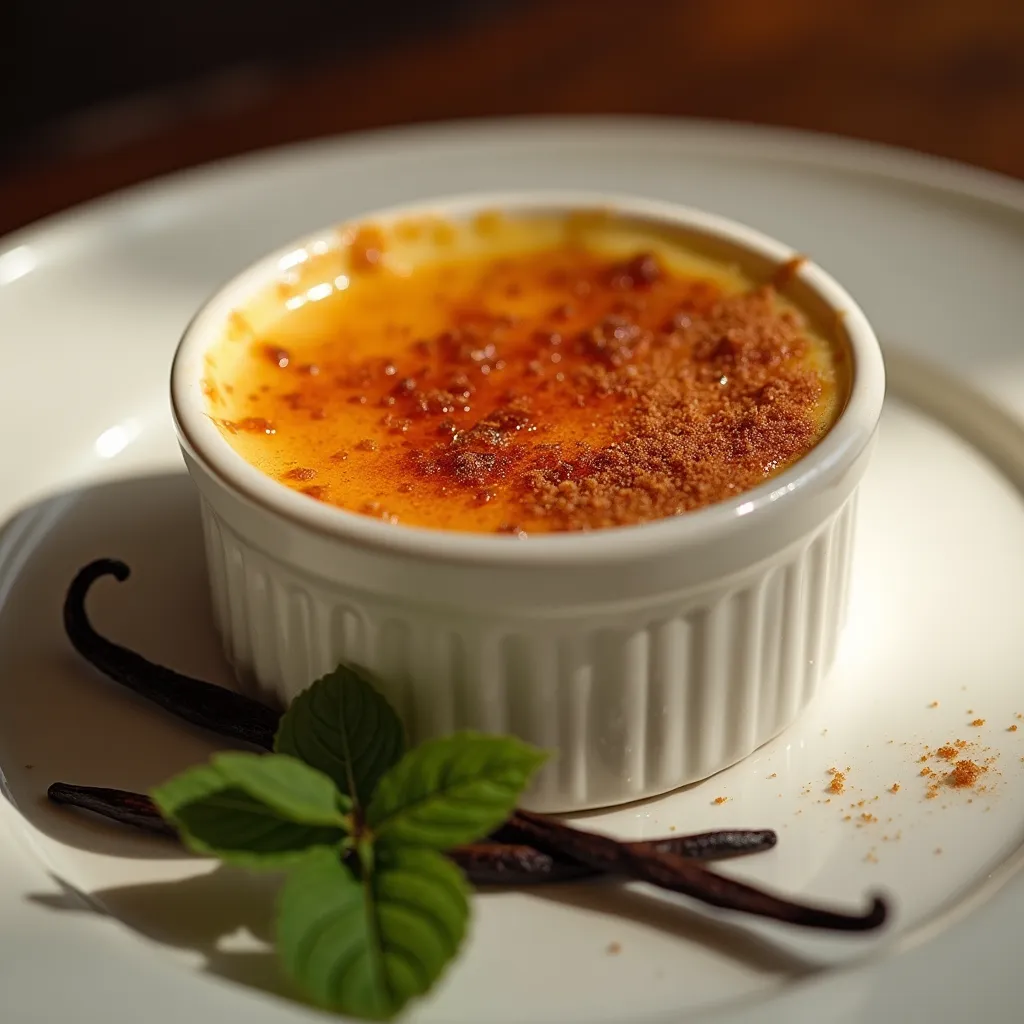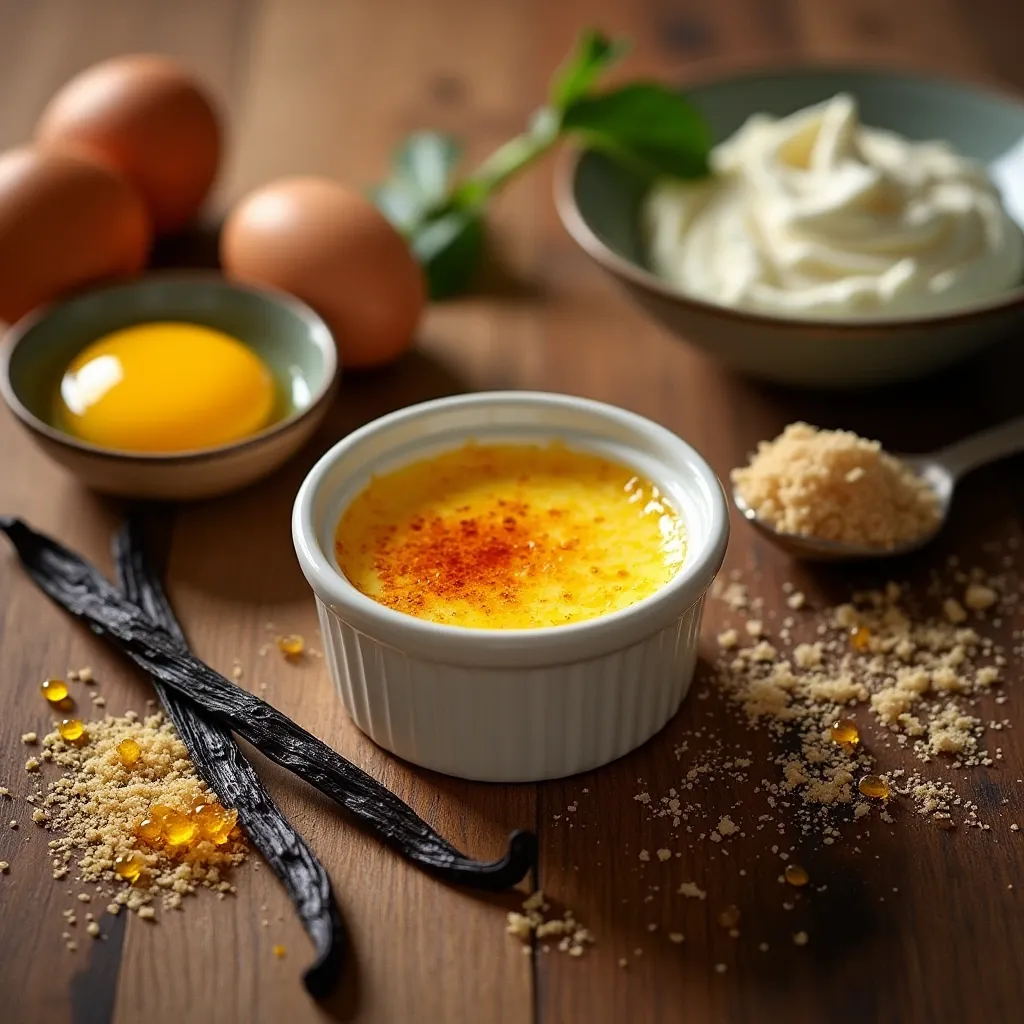Introduction to Crème Brûlée
Crème brûlée is one of the most beloved and indulgent desserts in the world. Known for its silky smooth custard base and its signature crunchy caramelized sugar topping, this French classic has captured the hearts and taste buds of dessert lovers everywhere. But have you ever wondered, what is crème brûlée made of? Let’s take a deeper look at the ingredients that come together to create this decadent treat.
The Origins of Crème Brûlée
Before we dive into the specifics of what crème brûlée is made of, it’s worth exploring its history. Crème brûlée, which translates to “burnt cream” in French, is believed to have originated in France, though there is some debate. Some food historians suggest that a similar dessert, “crème anglaise,” appeared in England long before the French version. However, the French version, as we know it today, is typically credited to the 17th century, popularized by French chefs in royal courts.
Key Ingredients in Crème Brûlée

Crème brûlée is all about the balance between a rich custard and a crispy sugar crust. The ingredients are relatively simple, yet the magic comes from how they work together.
Egg Yolks
Egg yolks are the star of the show in crème brûlée. They provide the custard with its rich, smooth texture. When combined with cream, the egg yolks help create a thick and velvety custard base that holds the delicate balance between firm and creamy. The high-fat content in the yolks also contributes to the luxurious feel of the dessert.
Heavy Cream
Heavy cream is another essential ingredient in crème brûlée. Its high fat content makes it the perfect base for a silky smooth custard. The cream also helps balance out the sweetness of the sugar and brings a luxurious mouthfeel to each spoonful. Without heavy cream, crème brûlée would lose much of its signature richness.
Sugar (Granulated and Brown)
Sugar is crucial for both flavor and texture in crème brûlée. Granulated sugar is mixed into the custard to sweeten it, while brown sugar is often used for the final caramelized topping. The process of “brûléeing” involves sprinkling sugar over the custard and then torching it until it forms a crispy, golden-brown layer. This sugar layer adds a delightful crunch and contrast to the smooth custard.
Vanilla
Vanilla is the flavor backbone of crème brûlée. Traditionally, vanilla beans are used to infuse the custard, providing an aromatic depth that perfectly complements the richness of the cream and egg yolks. If vanilla beans aren’t available, pure vanilla extract can be used as an alternative, though the flavor won’t be quite as intense.
How These Ingredients Work Together
Each ingredient in crème brûlée plays a vital role in achieving its signature texture and flavor. Let’s break it down further.
The Role of Egg Yolks
Egg yolks act as a thickening agent in the custard. When cooked gently, the yolks coagulate, thickening the cream mixture and giving it that rich, velvety texture. They also help the custard set, ensuring it holds its shape when served. The emulsification of fat from the yolks and cream is what gives crème brûlée its luxurious mouthfeel.
Why Heavy Cream is Essential
Heavy cream is what gives crème brûlée its decadence. Without it, the custard wouldn’t have that signature richness. The fat content in the cream also helps to balance out the sweetness of the sugar and the intensity of the vanilla. The cream’s smooth consistency creates a velvety texture that melts in your mouth with every spoonful.
The Sweetness of Sugar
Sugar is what sweetens the custard and creates the signature caramelized topping. Granulated sugar is mixed into the custard to provide sweetness, while brown sugar is sprinkled on top before caramelizing. This layer of sugar adds not only sweetness but also texture—crunchy, crackly, and a satisfying contrast to the smooth custard.
Vanilla’s Flavor Profile
Vanilla is a key ingredient in crème brûlée because it adds complexity to the dessert’s flavor. The rich, warm notes of vanilla balance out the richness of the cream and egg yolks. It’s the perfect complement to the sweetness of the sugar, creating a well-rounded flavor profile that’s both comforting and luxurious.
Variations of Crème Brûlée
While the classic version of crème brûlée is divine, there are several fun and delicious variations to try. Let’s take a look at a few.
Flavored Crème Brûlée
You can infuse crème brûlée with different flavors to give it a unique twist. Some popular variations include adding chocolate, coffee, citrus zest, or even floral flavors like lavender or rose. The process remains the same, but the addition of flavorings in the cream adds a new dimension to this classic dessert.
Vegan Crème Brûlée

For those who prefer a plant-based alternative, vegan crème brûlée is a great option. Instead of heavy cream, coconut milk or cashew cream is used to create a rich and creamy custard. Agar-agar or cornstarch can be used as a thickening agent in place of egg yolks. Vegan crème brûlée still delivers that signature silky texture, making it an excellent option for those with dietary restrictions.
The Process of Making Crème Brûlée
Making crème brûlée requires a few steps, but the end result is worth it.
Making the Custard
To start, you’ll whisk egg yolks and sugar together until they form a smooth mixture. Then, you’ll heat the heavy cream and vanilla (if using vanilla beans, be sure to scrape the seeds into the cream) until just simmering. Once the cream is heated, slowly pour it into the egg yolk mixture, whisking constantly to prevent the eggs from scrambling. After everything is well combined, strain the mixture to ensure a smooth custard base.
Caramelizing the Sugar
After the custard has been poured into ramekins and chilled, it’s time for the signature “brûlée” part of crème brûlée—caramelizing the sugar. Sprinkle a thin layer of granulated sugar on top of the custard and use a kitchen torch to melt and brown the sugar. If you don’t have a torch, you can also place the ramekins under a broiler, but be careful not to burn the sugar.
Why is Crème Brûlée So Popular?
Crème brûlée’s popularity can be attributed to several factors.
The Perfect Balance of Sweetness and Texture
Crème brûlée is the perfect dessert because it strikes a balance between sweetness and texture. The creamy custard contrasts beautifully with the crunchy caramelized sugar on top, making each bite a delightful experience.
The Theater of Cracking the Caramelized Sugar
There’s also a certain magic to the act of cracking the caramelized sugar. The satisfying sound of the sugar cracking beneath the spoon is a big part of the appeal. It’s like unlocking a little treasure hidden inside the dessert, and that moment makes crème brûlée feel extra special.
Conclusion: The Magic Behind Crème Brûlée
So, what is crème brûlée made of? It’s made of just a few simple ingredients—egg yolks, heavy cream, sugar, and vanilla—yet the result is nothing short of extraordinary. The balance of textures, the rich flavor, and the visual appeal all come together to make crème brûlée a favorite indulgence around the world. Whether you’re enjoying a classic version or a fun twist, crème brûlée is a dessert that always impresses.
FAQs
- Can I make crème brûlée without a kitchen torch? Yes, you can use a broiler to caramelize the sugar, but you’ll need to be careful not to burn it.
- How long does it take to make crème brûlée? The process usually takes around 2-3 hours, including chilling time for the custard.
- Can I make crème brûlée in advance? Yes, crème brûlée can be made a day ahead. Just store it in the fridge and caramelize the sugar right before serving.
- What can I substitute for heavy cream in crème brûlée? You can use coconut cream or cashew cream for a vegan version, or even half-and-half for a lighter version.
- Is crème brûlée gluten-free? Yes, crème brûlée is naturally gluten-free since it doesn’t contain flour. Always check ingredients to be sure there are no hidden gluten sources.

